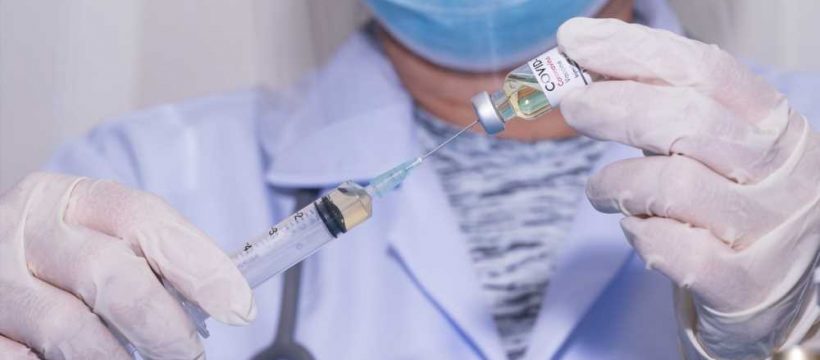A recent study published in The Clinical Respiratory Journal reviewed the challenges of coronavirus disease 2019 (COVID-19) vaccination and herd immunity.

Globally more than 6.5 million deaths have occurred due to COVID-19. Multiple COVID-19 outbreaks have been witnessed, primarily due to the mutant variants of the causal virus, severe acute respiratory syndrome coronavirus 2 (SARS-CoV-2). Limiting the continued transmission of SARS-CoV-2 variants has been challenging. The current study has reviewed SARS-CoV-2 variants and the challenges in vaccination and herd immunity.
SARS-CoV-2 variants
SARS-CoV-2 continually adapts to the hosts and acquires mutations over time resulting in mutants that (may) exhibit superior characteristics to the ancestral strain. Most mutations have no or little impact on the viral traits, but some may affect the pathogenicity, transmissibility, and disease severity.
Mutations in the spike protein, for instance, in Alpha and Delta variants, enhance the affinity between the spike’s receptor-binding domain (RBD) and host cellular angiotensin-converting enzyme 2 (ACE2). The World Health Organization (WHO) has designated emergent mutants as variants of concern (VOCs) or variants of interest (VOIs) based on their prevalence and characteristics.
Five VOCs, Alpha, Beta, Gamma, Delta, and Omicron, have been identified to date. SARS-CoV-2 Alpha has 17 mutations in its genome, including eight in the spike protein. The Beta variant had a 50% higher infection rate than the wild-type strain and was associated with an increased risk of hospitalization, severe disease, and death. The Gamma variant was twice as transmissible as the ancestral strain.
SARS-CoV-2 Delta has caused more infections than its predecessors, with severe illness in non-vaccinated populations. Notably, the risk of hospitalization with the Delta variant was twice that with SARS-CoV-2 Alpha. The Omicron variant has the highest number of mutations. Moreover, several sub-variants of SARS-CoV-2 Omicron have been identified. A study reported that a prior SARS-CoV-2 infection offered less protection against Omicron BA.4/5.
Antiviral drugs, vaccination, and herd immunity
Various antiviral drugs have been tested in clinical studies. Paxlovid is an antiviral drug that inhibits the activity of the 3 chymotrypsin-like (3CL) protease, also known as the main protease of SARS-CoV-2. Interim findings suggest that Paxlovid reduced the risk of hospitalization by 89% in patients relative to placebo subjects when given within three days of symptom onset, better than Molnupiravir, that reduced hospitalization risk by 50%.
SARS-CoV-2 vaccines have been significantly effective in reducing the risk of symptomatic or asymptomatic disease. Besides increased transmissibility/pathogenicity, SARS-CoV-2 variants have acquired immune-evasive traits, which diminish the protection conferred by vaccination. Nevertheless, some vaccines have been effective to some extent against SARS-CoV-2 variants.
For instance, the ChAdOx1 vaccine was effective against SARS-CoV-2 Alpha. Pfizer’s BNT162b2 vaccine was 91% effective against the Beta variant in Qatar. Both ChAdOx1 and BNT162b2 vaccines have been efficacious against SARS-CoV-2 Delta, with the latter being more effective than the former.
Herd immunity is essential for epidemic control. A significant proportion of the population should be immune to prevent large outbreaks. Studies suggest that immunity from past infection with pre-Omicron variants is 15% to 28% protective against re-infection with SARS-CoV-2 Omicron BA.4 or BA.5 sub-variants.
In contrast, Omicron BA.1 or BA.2 infection-induced immunity offered 76% to 79% protection against re-infection with BA.4 or BA.5. Some data-driven models suggest that for a vaccine with 74% efficacy, vaccination coverage should exceed 93% to achieve herd immunity. The current vaccination coverage is low and must increase to attain herd immunity.
COVID-19 incidence in children
Notably, the incidence of COVID-19 has been lower in children than adults, with much lower mortality in the early pandemic. However, data from Malaysia suggest that COVID-19-associated mortality among children was higher during the Delta wave. Moreover, another study reported that hospitalization rates were nearly five-fold higher in children and adolescents than in adults. As a result, multiple countries have authorized vaccinating children aged 5 to 11 years.
Vaccination priority and vaccine skepticism
COVID-19 vaccination programs have implemented prioritization strategies such that the most vulnerable groups, such as healthcare workers (HCWs), those in essential services, immunocompromised, and comorbid subjects, get priority over others.
Some people refuse to vaccinate, assuming a low risk of infection, while some are skeptical about vaccination due to safety concerns or lack of trust. Interactions with people influence vaccination decisions. Social pressure and encouragement from trusted and influential peers will increase vaccine uptake.
Concluding remarks
Overall, more efforts are required to improve vaccination coverage, particularly among the priority groups who have not been vaccinated yet. Moreover, non-pharmaceutical interventions such as physical distancing, face masks, and proper ventilation in indoor settings, among other measures, should be appropriately implemented to contain the COVID-19 pandemic.
- She J, Hou D, Chen C, Bi J, Song Y. (2022). Challenges of vaccination and herd immunity in COVID‐19 and management strategies. The Clinical Respiratory Journal. doi: 10.1111/crj.13543 https://onlinelibrary.wiley.com/doi/10.1111/crj.13543
Posted in: Medical Science News | Medical Research News | Disease/Infection News
Tags: ACE2, Adolescents, Angiotensin, Angiotensin-Converting Enzyme 2, Antiviral Drug, Children, Coronavirus, Coronavirus Disease COVID-19, covid-19, Drugs, Efficacy, Enzyme, Genome, Healthcare, immunity, Mortality, Omicron, Pandemic, Placebo, Protein, Receptor, Respiratory, SARS, SARS-CoV-2, Severe Acute Respiratory, Severe Acute Respiratory Syndrome, Spike Protein, Syndrome, Vaccine, Virus

Written by
Tarun Sai Lomte
Tarun is a writer based in Hyderabad, India. He has a Master’s degree in Biotechnology from the University of Hyderabad and is enthusiastic about scientific research. He enjoys reading research papers and literature reviews and is passionate about writing.
Source: Read Full Article
